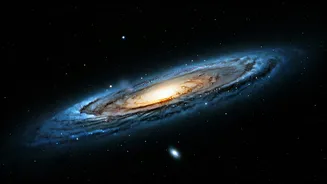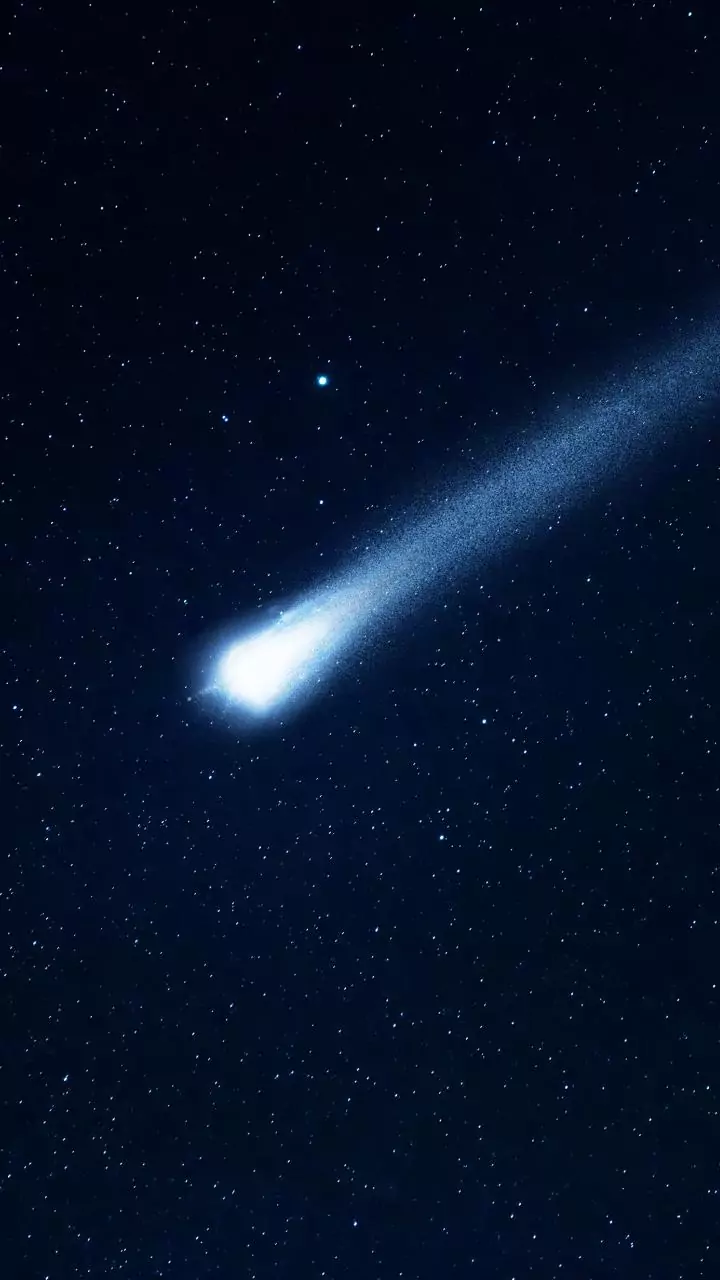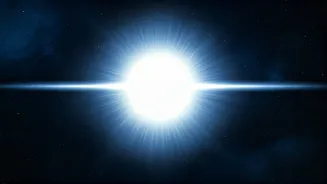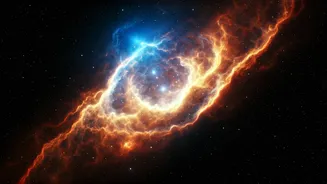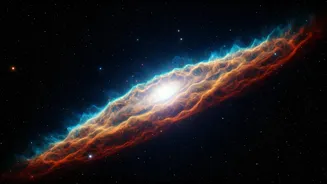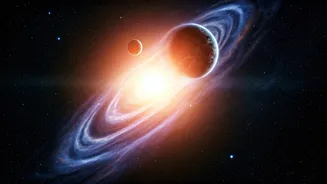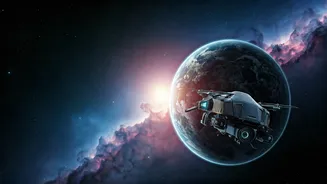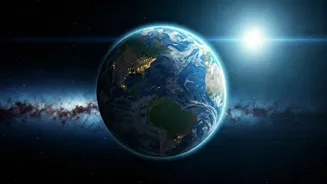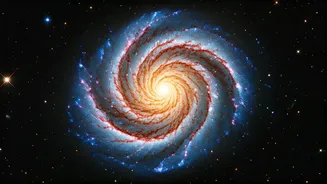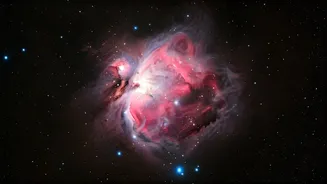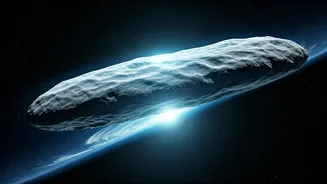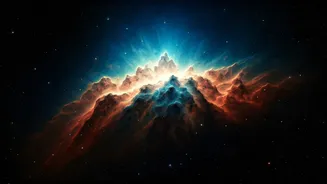Carbon Planet Revelation
The James Webb Space Telescope (JWST), a marvel of modern astronomy, recently detected an exoplanet that has turned out to be strikingly unique. Instead
of finding a planet composed of rock or gas like those in our solar system, scientists made the astonishing discovery that this exoplanet is made almost entirely of carbon. This finding, while based on preliminary data, has the potential to rewrite some chapters of astrophysics. It presents a major challenge to our current models of how planets form, and it also opens the door to new theories about how diverse planetary systems can be. The sheer existence of this carbon-rich planet forces astronomers to reconsider what types of planets are possible and how they might come to be. The JWST's capacity to analyze the light and chemical makeup of distant worlds is what allowed this remarkable discovery to be made. As a result, the capabilities of JWST are pushing the boundaries of what can be known about the cosmos.
Compositional Mysteries Explored
The primary characteristic of this planet, which sets it apart, is its overwhelming abundance of carbon. This suggests that the planet formed under conditions that were significantly different from those that gave rise to the planets we know in our solar system. The exact proportions of carbon present in the planet are still being investigated, but early analyses have indicated that carbon is the dominant element, forming most of its mass. This differs drastically from planets in our own system, which are composed primarily of silicates, metals, and various gases. The existence of a planet so rich in carbon raises questions about the materials present in the protoplanetary disk from which it formed and the physical processes that allowed carbon to become the most prevalent element. Furthermore, the type of carbon present on this planet is also of interest. It is possible that large quantities of the carbon could be in the form of graphite or even diamond, depending on the pressure and temperature conditions in the planet’s interior. These details are essential for gaining a clearer idea of the planet's appearance and characteristics.
Formation Model Challenges
The discovery of a carbon-rich planet poses a significant challenge to existing models of planet formation. Traditionally, it is believed that planets form from a disk of gas and dust that surrounds a young star. In our solar system, the inner region of this disk is primarily composed of rocky materials, while the outer regions are rich in volatile ices and gases. This segregation leads to the formation of rocky planets closer to the star and gas giants farther away. However, the presence of an almost pure carbon planet does not easily fit into this model. It suggests that the environment around the star from which this planet formed was drastically different. One possible explanation is that the protoplanetary disk around the star contained an abundance of carbon, perhaps due to the star’s own chemical composition or the presence of specific carbon compounds. Another idea is that the planet formed far from its star and then migrated inwards, accumulating carbon-rich materials along the way. Determining the exact process by which this carbon planet was formed is essential for refining existing planet formation models and developing new theories that can explain the formation of such unusual planets.
Implications for Research
The discovery of this carbon-rich planet has considerable implications for ongoing astrophysical research. One significant consequence is that it provides valuable data to test and refine existing models of planet formation. Astronomers can now incorporate this new data point into their simulations, allowing them to better understand how a variety of different planets can come to be. Additionally, the finding promotes further studies on the various types of planetary compositions that could potentially exist in the universe. Scientists are eager to learn about the atmospheres and surface conditions of carbon-rich planets. This includes researching their potential for harboring life, as well as the unique geological characteristics they might possess. The existence of these planets could also prompt investigations into the types of stars around which they are likely to form and the composition of the protoplanetary disks that surround them. The more we learn about this remarkable planet, the more we can refine our understanding of the universe and its diverse range of planetary bodies.
Future Observations & Beyond
Future observations of this carbon-rich planet by JWST and other advanced telescopes are planned to gather more detailed data. These observations will focus on the planet’s atmosphere, surface characteristics, and overall composition. Spectroscopic analysis will be critical for determining which carbon compounds are most prevalent and assessing the presence of other elements. Researchers also intend to use these observations to assess the temperature and pressure conditions on the planet's surface and the potential for any atmospheric features. Beyond the immediate scientific findings, this discovery opens up several broader avenues for exploration. It prompts further research into the types of exoplanets that can exist in the universe and prompts a re-evaluation of the habitable zones of stars and what conditions are required for supporting life. This discovery will undoubtedly continue to inspire new research, technological innovations, and educational outreach to help bring the wonders of space to the general public.


